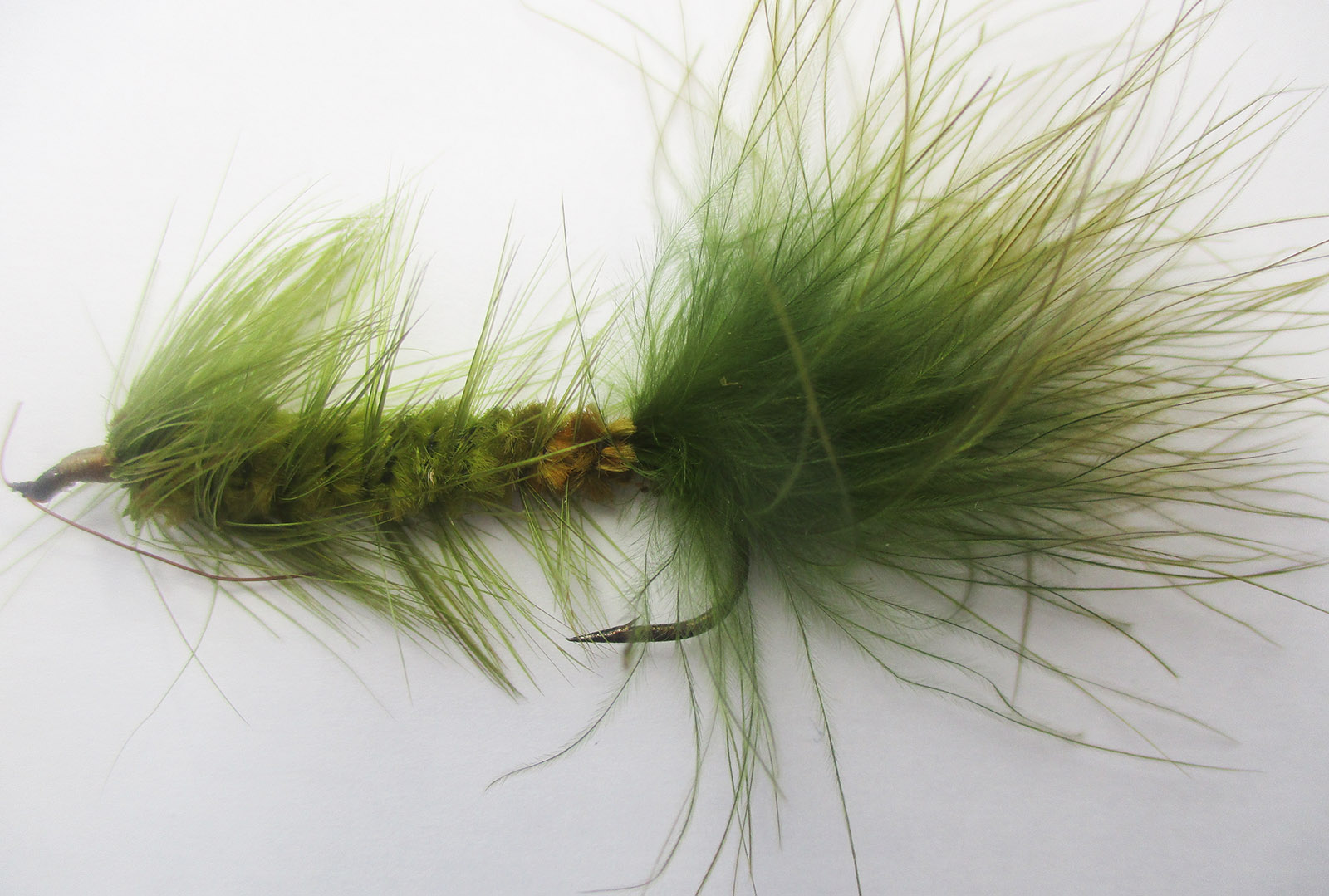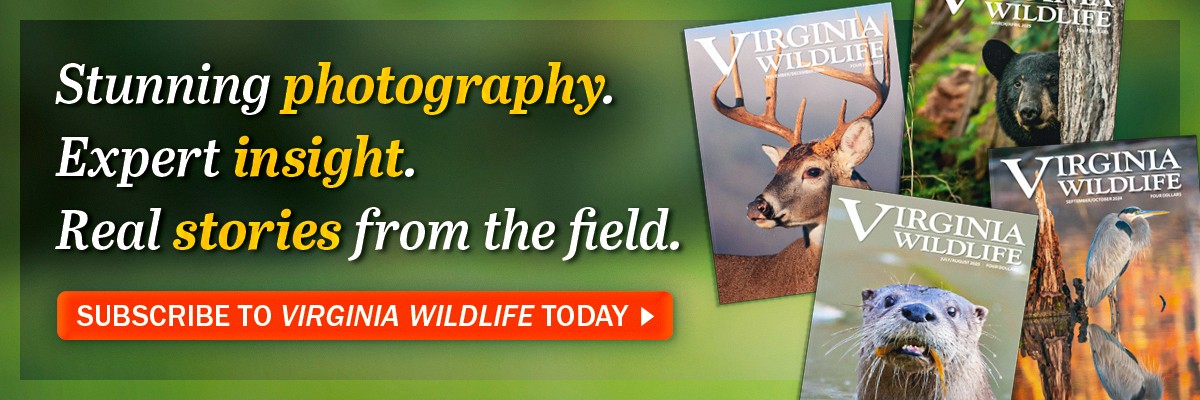By Gerald Almy
Maybe you don’t need to carry those clunky, cumbersome vests full of hundreds of flies every time you want to spend a few hours on your favorite trout stream.
Sometimes we anglers overthink things. Dedicated trout fly fishermen typically carry a vest stuffed full of dozens of varieties and sizes of flies. But sometimes that just complicates things and makes choosing the best fly for a given situation confusing.
If you’d like to simplify things, or are just getting into the sport and want three broadly effective patterns, give this trio of offerings a try. The selection includes one nymph, one streamer, and one dry fly. These will catch trout in virtually any type of water from spring creeks to freestone streams to tailwaters. And these flies will also work on ponds for bass and bluegills as well as Virginia’s famous smallmouth rivers such as the Shenandoah, James, and Rappahannock.
Woolly Bugger
Visions of trout heads poking above the surface to sip in mayflies often sustain us through long winter days, but Mother Nature isn’t always so kind when spring and summer arrive. Often waters will be high and off-color.

Gerald Almy Photo
Hatches may be sporadic, or the insects may simply not appear in sufficient quantities to draw fish up. When that happens, try a searching pattern. For that role, it’s hard to top the proven woolly bugger, which can represent minnows, sculpins, leeches, crayfish, and nymphs.
This fly is basically a woolly worm with a long marabou tail added for bulk and fluttering appeal. Sometimes a few strands of flashy tinsel are mixed in with the marabou tail. Top colors are black, olive, and brown. Hook sizes 4 through 10 are all useful, depending on the size of the stream you’re fishing, the size of the trout residing in it, and how clear the water is. On a murky river with big browns, go with 4s and 6s. On a small clear brookie stream, opt for 8s or even 10s.
In shallow waters and riffles, an unweighted bugger can be quite effective. More often than not, a fly tied with a bit of lead on the shank is preferable. Alternately, you can pinch a small split shot on the leader a foot in front of the fly or use a sinking-tip line. Leaders should be short, with the tippet testing 4 to 6 pounds.
The top presentation for the woolly bugger is across and slightly downstream. This draws the fly through the current broadside, giving the fish the best look at it. Adding sharp strips of six to 12 inches usually produces best.
Work pools, runs, eddies, and undercut banks. Besides fast-stripping, try a slow hand-twist retrieve. Occasionally even dead-drifting the streamer along the bottom works well. This gives the appearance of a dislodged insect tumbling along helplessly in the current.
Gold-Ribbed Hare’s Ear
Nymphs come in a wide array of shapes and sizes. For a productive all-purpose pattern, stock a selection of gold-ribbed hare’s ears. This fly imitates the dull grayish-brown color of most natural mayfly nymphs, and the gold ribbing adds a segmented look and some flash for extra fish appeal.
To fully utilize this fly’s versatility, stock a variety of sizes from 6 to 18 in both weighted and unweighted versions. Keep them organized by wrapping the heads of the ones with lead in a different color from the unweighted ones.
Use the large heavy patterns for big deep waters and off-color river conditions. Turn to the smaller ones for clear streams and when tiny insects are active.
A floating line works best for most nymphing with an eight- to 10-foot leader tapering to a 4X-6X tippet. Add a strike indicator near the point where the leader joins the line or closer to the fly if you’re fishing shallow. For especially deep or swift water, add a split shot or two to the leader a foot or so above the fly.
Adams
This fly will imitate many mayflies effectively. It also does a fair job when caddis flies are emerging. For most of these situations, sizes 12 through 18 are appropriate. When midges are prevalent, the Adams is also a great pattern in sizes 20-24. (You don’t need to fool with wings when tying the flies this small.)

Photo by Shutterstock
When spinners are on the water, a variation of the Adams tied with wings spread farther out, parallel to the water, can be very effective. If the trout refuse this fly during a spinner fall, try clipping the bottom hackle so the body lies flush on the surface film.
A parachute dressing with a clump deer hair wing and hackle tied around the wing parallel to the water is a style I often turn to on slick, clear waters or when fishing over hard-pressured trout. For day-in, day-out use as a searching fly, or when you don’t have an exact match for a hatching insect, few flies can compare with the classic Adams pattern tied on a size 12-18 hook.
Stock a selection of these three flies in different sizes and colors and you’ll be well prepared for catching trout on any stream in Virginia. Maybe we don’t always need those bulky overstuffed trout vests after all!


